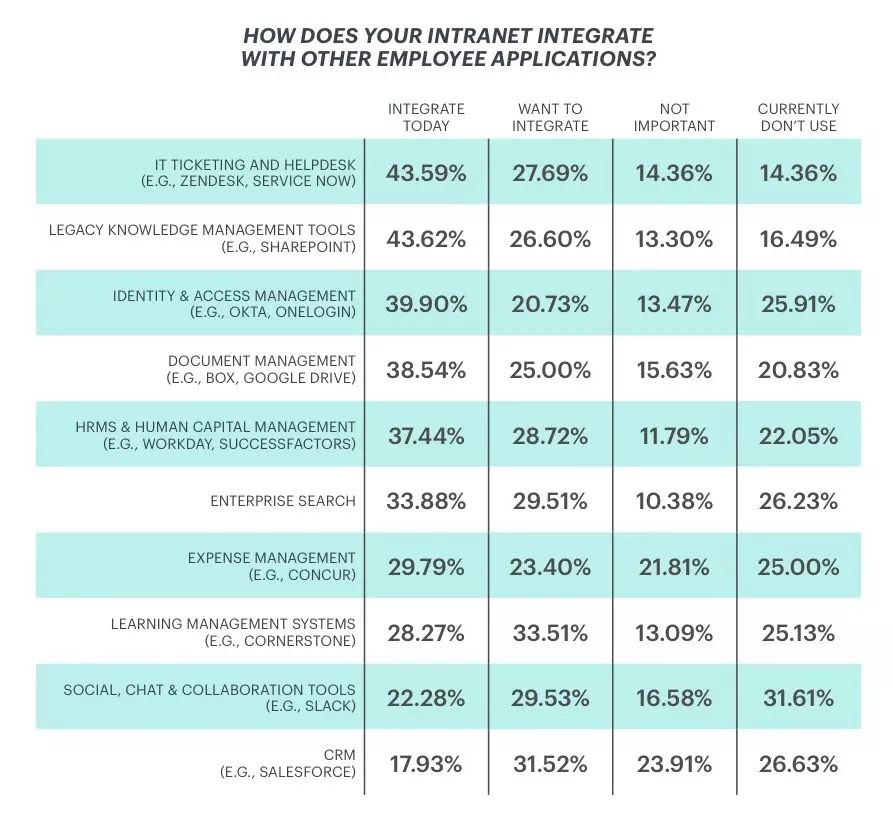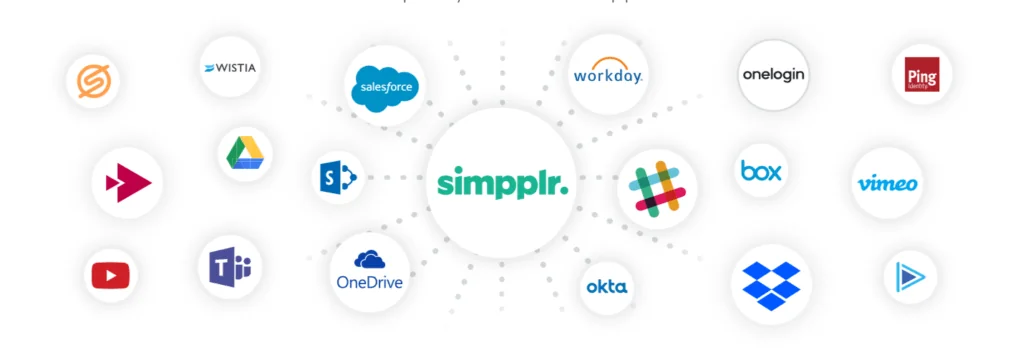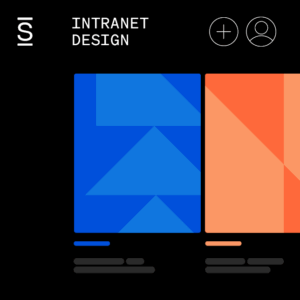Integrations are core to the intranet industry. They’re even a subtle part of the term “intranet”, which infers an interconnectedness among systems across the organization.
Intranet charters typically involve either connecting a distributed workforce or providing employees with a single source of truth for critical information. It makes sense that intranets need to integrate well with other applications.
Every year in our State of the Intranet research, Simpplr Research asks practitioners about the state of their intranet’s integrations. Even as many intranets intend to provide employees with a single source of truth or serve as a gateway to the broader digital workplace, legitimate intranet integrations are not widespread. Intranets are not integrating with any technology type more than 50% of the time, and types of integrations differ widely.

Today Simpplr maps well to these priorities and is using research like this to get better.
Intranet integrations are important but they need to serve a purpose
Evaluating intranet software integrations is not a simple check-the-box exercise, and it’s important that you scrutinize a vendor’s integrations.
Sadly, many intranet technologies, past and present, have committed the following errors:
- They market insufficient integrations. Oftentimes a technology may technically “integrate”, but the developers have not put a lot of thought into workflow or depth. With today’s web-based technologies, it’s very easy to slap in an iframe (this is basic HTML), pull in the UI from another application, and call it an intranet integration.
- They create too many integrations without giving thought to whether it improves the intranet’s experience. Recall, one of the primary reasons intranets fail is because they become dumping grounds with uncurated noise. Unmanaged integrations, especially with applications that don’t benefit users across departments and locations, are part of the problem.
Simpplr takes intranet integrations very seriously and they’re core to our underlying product strategy. The world has transitioned from legacy, behind-the-firewall software to more contemporary, cloud-based subscription software. To be an intranet built for 2019, it’s imperative for us to integrate well with today’s other best-in-class, cloud-based business applications.
Everything Simpplr does is research-backed and must tie back to our brand promise of simplicity. When we build out new intranet integrations, we question how this is going to improve the intranet experience. We won’t build an integration if it adds too much clutter or diverts from our strategy of building a clean, curated place to connect and align employees.
Saying no is hard. For example, Simpplr integrates with calendar applications to create and promote events. But even with our capabilities, we’ve taken heat for not framing full Outlook or Google calendars within our application because this is a capability others have in the market. Based on user reviews and research, we learned that nobody uses these capabilities, they clutter the overall experience, and Simpplr doesn’t want to focus on building a better calendar than Microsoft. Many intranets are overbuilt and their needless capabilities contribute to their failures.
Nonetheless, Simpplr has built scores of meaningful integrations that make a better intranet.

Over the coming weeks, we’ll highlight specific integrations, focus on why they’re important, and explain how they were built. Stay tuned!

















